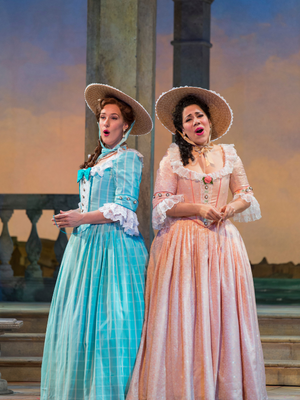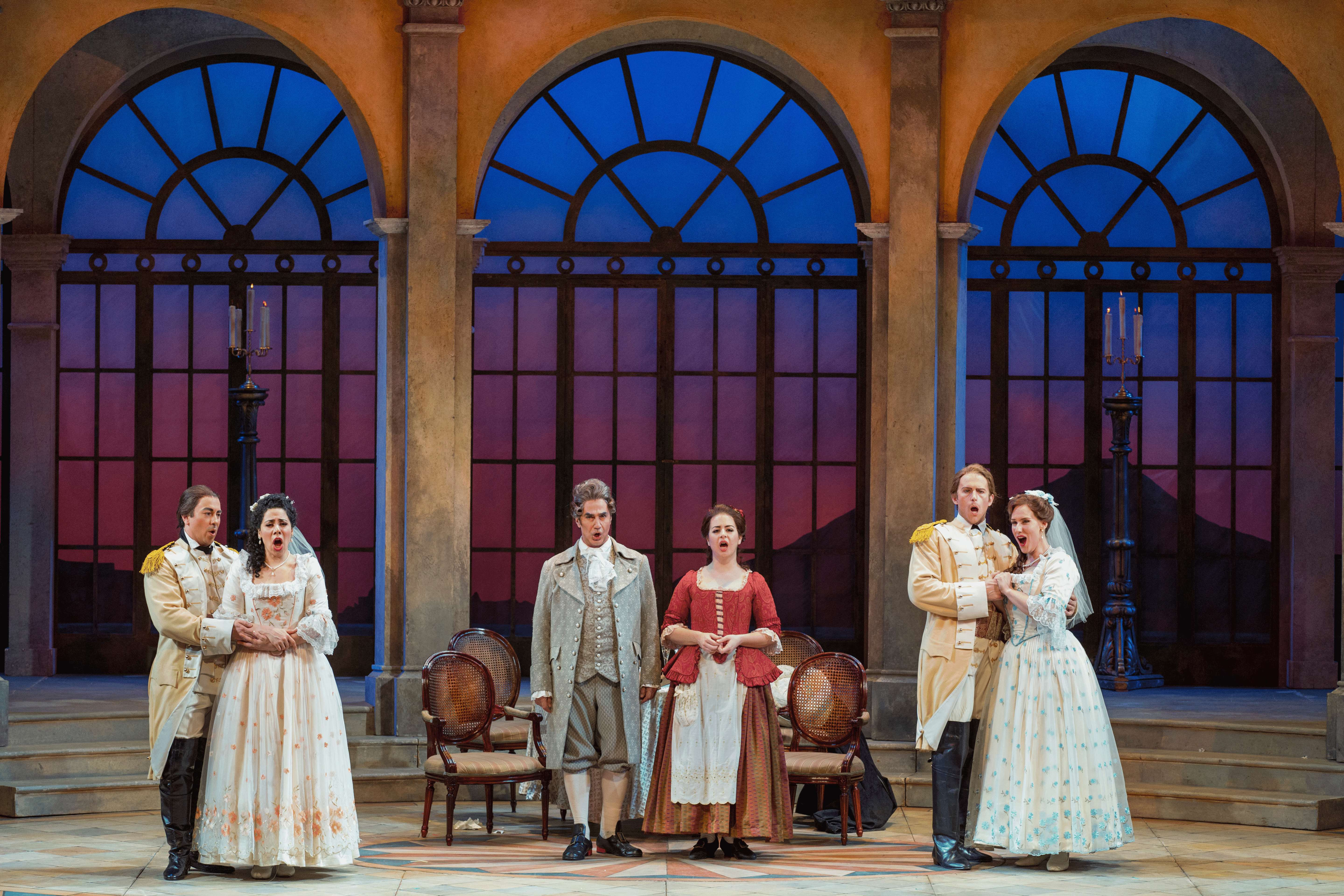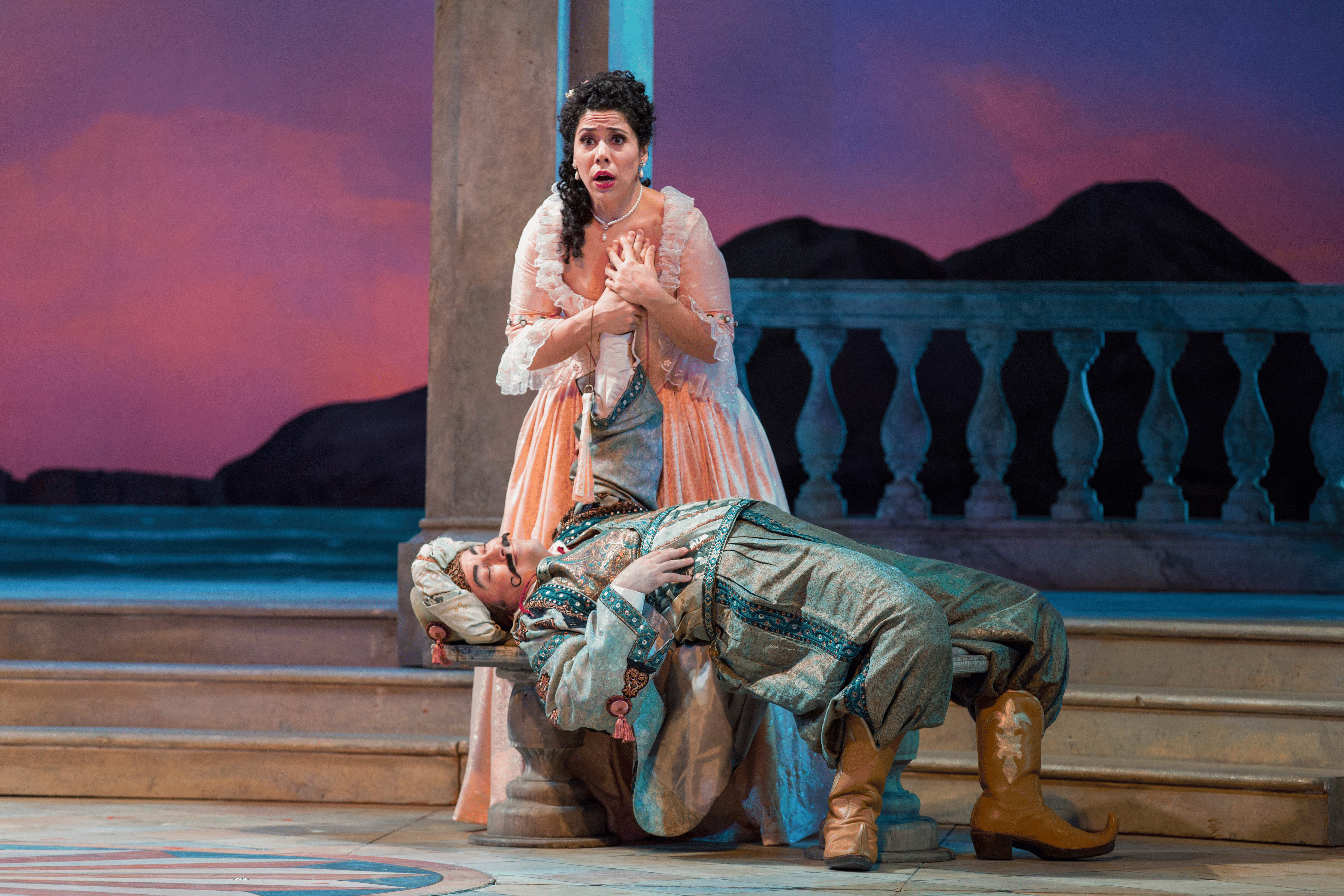
COSÌ FAN TUTTE BACKGROUND NOTES
Così fan tutte is the last of Mozart's three great operas written in collaboration with Lorenzo Da Ponte, the previous ones being Don Giovanni and Le nozze di Figaro. The opera was commissioned by Emperor Joseph II of Austria. Da Ponte crafted his original libretto, using a range of classical literature (most notably Ariosto's Orlando furioso) as his inspiration. From this Mozart and Da Ponte provided a score that is as gorgeous as any the composer wrote, and a text of great wit, insight and complexity.
The world premiere took place at the Burgtheater in Vienna on January 26, 1790, on the eve of the composer's thirty-fourth birthday. Despite the work's quality it did not initially achieve the success of its predecessors. Following only a handful of performances, additional repetitions of Così fan tutte were suspended due to the death of the emperor, and the opera virtually disappeared for a major part of the 19th century. Fifty years passed after its premiere before it was first heard in Italy.
Così also faced a rather unique problem. Although many operatic works (such as several of Verdi's) had to undergo various changes of locale and plot due to censor's restrictions, Così's evolution was more extreme: the beauty of Mozart's music was well recognized and acknowledged, but Da Ponte's text was long considered too immoral and salacious for the delicate sensibilities of the 19th century.
What seemed to be the solution? To write a completely new libretto with an existing score! In fact, not just one, but several. There were a number of rewritten texts in Germany alone, and at least one in Victorian England, entitled Tit for Tat. (That would make fascinating reading today!) Some of the other titles the work was performed as include The Two Aunts from Milan, Love and Temptation, The Girls from Flanders, and even The Guerillas. This identity crisis is one of the main reasons that the opera achieved no real place in the repertoire of the 19th century. It was only in the 20th century that Così's fortune changed for the better. It reached the Metropolitan Opera in 1922, though it was not heard regularly in that theater until a revival in the early 1950's. But it is generally believed that Così's emergence as a true masterpiece dates to the production at the 1934 Glyndebourne Festival in England, which can be heard in a historical recording. From that time forward, it has been performed in theaters all over the world not only as one of Mozart's major works, but as one of the glories of the entire operatic repertoire.
On the surface, the basic plot of Così may appear quite fragile, and those expecting the belly laughs found in opera buffa might be well disappointed (except perhaps for Despina's disguises as the Doctor and the Notary). But the audience that delves a bit deeper is sure to be rewarded, for Così is filled with characters of wonderful humanity and complexity who find themselves in situations all too familiar to those who have experienced the joy, pain, and confusion of being in love (in other words, all of us!).
In the world of opera where characters tend to be of extreme goodness or evil, the inhabitants of Così's world reflect the ambivalence and shifting emotions that are so much a part of life. As the somewhat mock opera seria emotions of the sisters in Act I give way to deeper, more insightful, heartfelt feelings in Act II, Da Ponte shows that he is a dramatist of the human condition.
The suitor's disguises are actually quite flimsy, and easy to see through. But much like the love potion in Tristan und Isolde, they simply serve to unlock feelings and emotions that are ready to surface. The title Così fan tutte means "all women are like this." But, in fact, it could just as fairly be changed to Così fan tutti, or "all MEN and women are like this."
Just as Mozart and Da Ponte quote their own Figaro in the banquet scene of Don Giovanni, the title Così fan tutte is actually a quote from the cynical Don Basilio, first heard in Le nozze di Figaro. In Così these masters maintain the superb high quality of their collaboration. One might be forgiven for feeling that in such moments as Così's Act I trio, "Soave sia il vento," they might even have surpassed themselves. Music and words do not get more ravishing this side of heaven.


